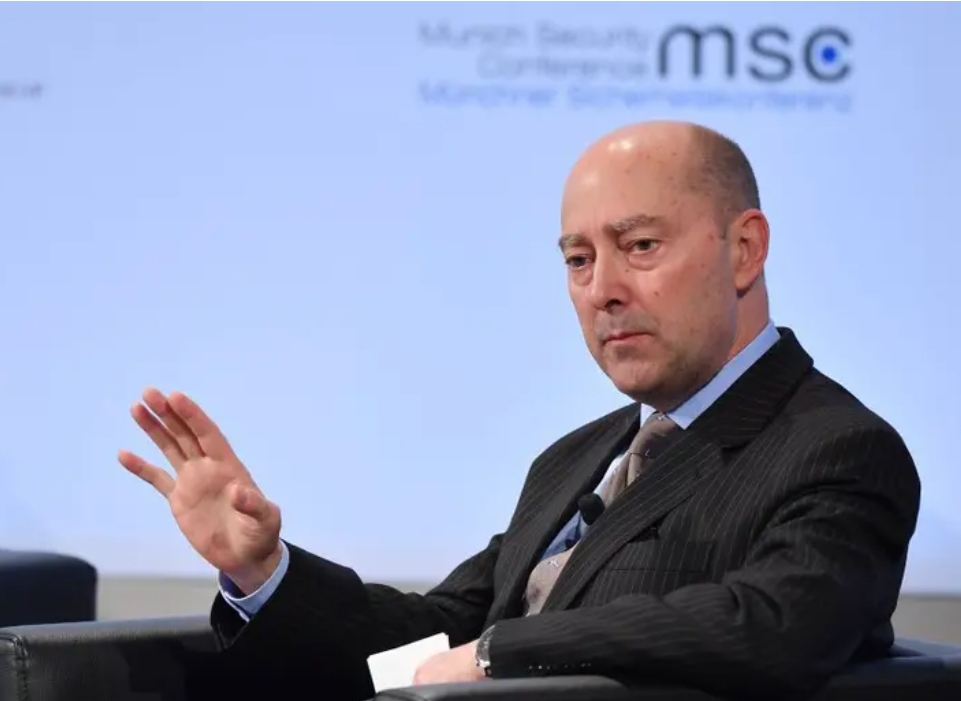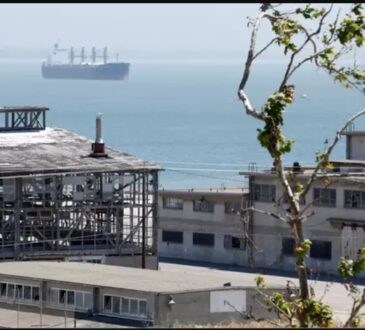
Former NATO Supreme Allied Commander James Stavridis said recent attacks in Ukraine could force Western forces to impose a “no-fly zone” over the country, creating the possibility of a “dangerous” escalation in its ongoing war with Russia as its president, Vladimir Putin, has begun ramping up nuclear rhetoric toward the West.
In a tweet on Monday, Stavridis, who is also a retired four-star U.S. Navy admiral, warned that Russia’s flailing invasion of the country could cause Putin to resort to even more intense missile strikes against Ukraine in an attempt to level the country’s settlements in the way it did in Syria toward the end of the last decade.
After the destruction of the Kerch Strait Bridge over the weekend, which connected Russia and the Crimean peninsula, a series of explosions rocked the Ukrainian capital of Kyiv and cities around the country with a focus on civilian targets and infrastructure not seen since the start of the war in late February. Ukraine has not officially claimed responsibility for the explosion.
The violence prompted renewed calls from Ukraine for countries aligned with NATO to impose a no-fly zone over the country.
“If we had 4th generation of fighter jets with proper radars and missiles we could have imposed our own no fly zone over Ukraine and shot down all Russian missiles,” Daria Kaleniuk, co-founder of the International Centre for Ukrainian Victory, wrote in a tweet Monday.
The prospect of a no-fly zone over Ukraine was discussed even in U.S. government circles from the start of the war, but was long seen as a non-starter for the U.S. as it has sought to avoid risking the possibility of a broader conflict between Russia and NATO-aligned forces in Europe.
If invoked, any counterassaults on Russian targets could be seen as a formal entry into the conflict by the West, potentially prompting the Russian leader to make good on his previous threats to invoke the use of nuclear warheads.
While NATO-aligned countries have, so far, preferred financial aid to Ukraine over direct military action, Stavridis said that if attacks similar to those seen on Monday continue, the U.S.—and NATO—would likely have no choice but to increase its involvement in the conflict and call Putin’s bluff.
“Putin will try to turn Ukrainian cities into destroyed wastelands,” he wrote in a tweet. “He will try to create Aleppo on the Dnieper river. Ukraine needs the best air defenses we can provide, including military aircraft.”
Stavridis added: “If Putin continues this terror campaign of strikes, NATO may have to consider a no-fly zone. That would be a significant and dangerous escalation. We should communicate that risk to Putin.”
While U.S. officials have not revisited the prospect of implementing a no-fly zone recently, the Biden administration has begun to publicly address Putin’s claims the country could potentially enlist the use of nuclear weapons in the instance of an escalation.
“He is not joking when he talks about potential use of tactical nuclear weapons or biological and chemical weapons, because his military is, you might say, significantly underperforming,” President Joe Biden said last Thursday. “I don’t think there’s any such thing as the ability to easily use tactical nuclear weapons and not end up with Armageddon.”
The U.S. State Department indicated Friday it has received no intelligence to indicate a Russian nuclear attack is imminent, and that it has so far declined to adjust its own nuclear posture in light of those threats. However, U.S. State Department spokesperson Vedant Patel, told reporters on Friday that the U.S. has “communicated directly with Russia about the catastrophic consequences that would take place should they decide to use nuclear weapons.”




